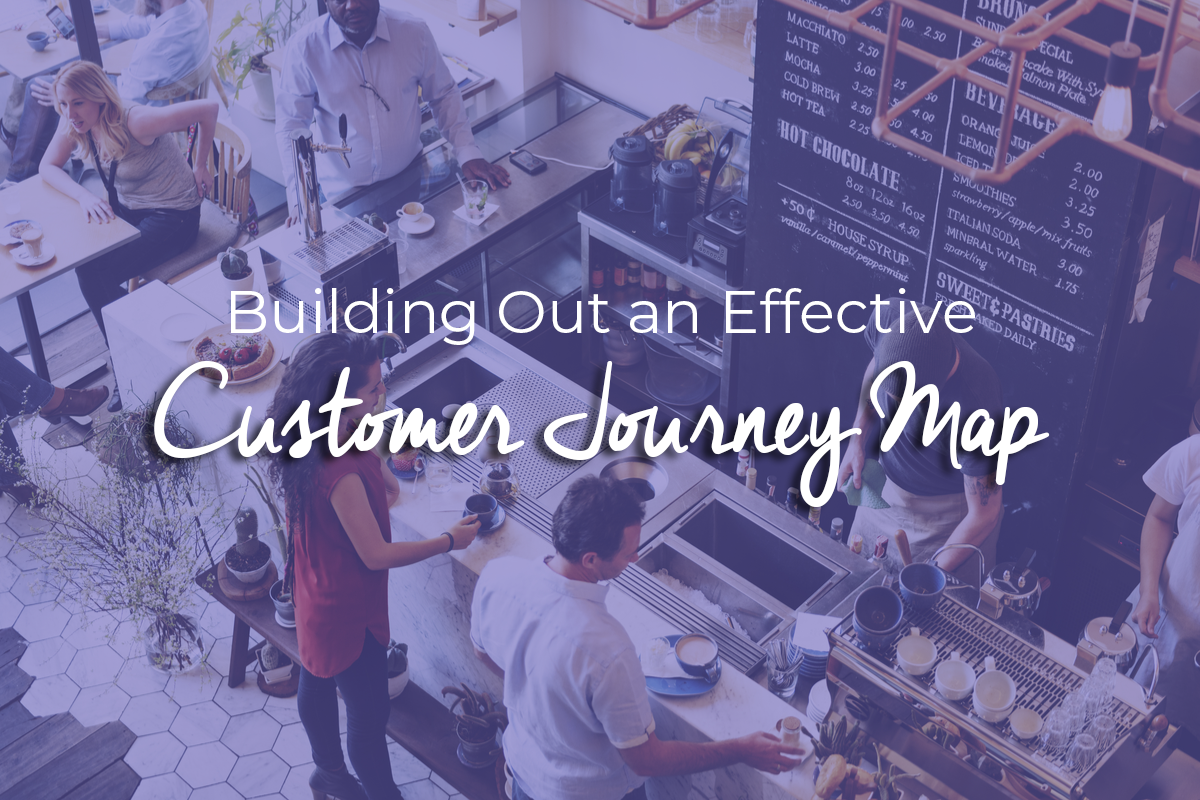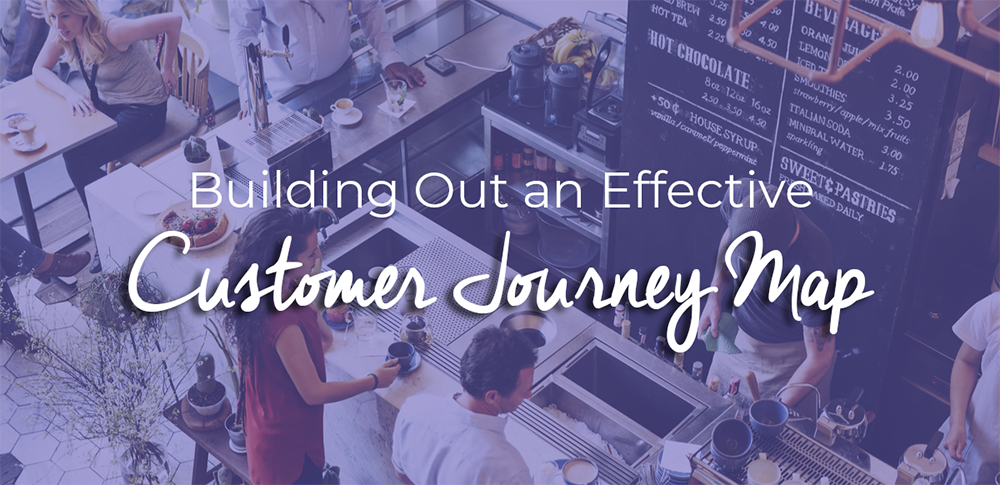
A retail customer journey map is your plan for leading shoppers through each step of their purchase process.
All retailers need this outline so they can identify opportunities that lead prospects to become paying customers. Here are the four steps you can use to lay out a retail customer journey map for your business.
Step One: Establish Brand Awareness
The first stage of the retail customer journey map is about getting potential shoppers to take notice of your brand and become aware of your products. This is the out-of-store marketing stage of the funnel that uses advertising, PR, and outreach to lead customers to your store. To be effective in this phase, incorporate the following strategies:
Define your target audience. Before you can begin to market your business, you need to know your primary customer base. Start by creating a buyer persona for your target audience. A buyer persona is a characterization of your ideal shopper. It outlines their demographics (age, income, education, etc.) as well as their habits and interests. Play on this information to craft various examples of your ideal audience and use these personas as your primary base-points as you craft your customer journey map and other elements of your marketing strategy.
Identify where your target audience spends time. When you define your target audience, spend extra time assessing the habits of your ideal shopper, and outlining where they spend their time. Ask yourself the following questions:
- What websites does your target audience use?
- What blogs do they read?
- What social media platforms do they use?
- What nearby areas do they frequently visit?
- What magazines do they read and which televisions shows do they watch?
Place messaging in the locations most likely to connect with your target audience. When you know where your audience spends time, you can put your marketing messages where they are most likely to connect with your audience.
This portion of the retail customer journey map outlines how to get your audience interested in your store. The next phase looks at how you can get customers to come in the door.
Step Two: Remember Curb Appeal
Before customers will do business with your brick-and-mortar retail store, they must feel interested, welcomed, and excited enough to come through the door. To make sure the exterior of your business is inviting customers and not pushing them away, ask yourself the following questions.
- Is it easy to find the store?
- Is easy to tell what type of store it is from the outside?
- Is the storefront inviting and clean?
- Is there enough parking?
- Are there clear directions on where to park?
- Are there unobstructed windows that allow customers to see inside before they open the door?
Look at your business as an outsider, and consider if you would be willing to enter based on the exterior of the retail store alone.
Step Three: Guide Customers While In-Store
The next stage of the retail customer journey map is about the experience the customer has from the time they enter the store, navigate the showroom, and end up at the checkout counter. As you develop the in-store experience, use the following tools and approaches to influence and guide customers in your store.
Showroom Atmosphere: Your store shouldn’t just be a bunch of products on shelves. It should be an experience that conveys the feelings you want your customers to have. (Use these tips for setting up your showroom to impress customers and increase sales.)
Product Displays: Make sure your products are all easy to find, experience, and understand. Use clear signage to identify departments. Position product displays and end-caps to catch attention, and consider using product demo videos to illustrate the use of items.
Add Scent: Smell is the strongest trigger for memories. Use a custom scent to represent your brand. Not only will customers enjoy and remember your brand long after they leave, but scent marketing has a subconscious effect on shopper behavior and spending patterns.
Check Out Our Retail Store Checklist to Audit Your Store’s Effectiveness.
Signage: Use in-store signs to promote products, events, and specials to customers. In-store customers are already highly engaged prospects, so use eye-catching multimedia displays and digital signage to deliver promotional and branded content to shoppers.
Overhead Messaging: Also, capitalize on having the attention of interested shoppers by using overhead messaging to share sales specials, product information, and store details to prospects already in your store.
Checkout: Optimize your checkout counters to promote additional sales and a better experience for the shopper. Use the area around your checkout counter to display smaller, last minute purchases. Provide a comfortable experience by creating clear waiting lines and engaging content displays that help the wait time feel faster. Finally, train your employees to provide exceptional customer service, and use words like “please” and “thank-you.”
An exceptional in-store experience drives initial sales and can help get customers to come back for more.
Step Four: Encourage Return Customers
The last phase of the retail customer journey map is about getting the customer to remember you, return to your store, and restart the cycle of the purchasing process. To encourage your past customers to become repeat customers, use the following tactics.
Collect customer data. Implement a system that creates customer profiles. WiFi Marketing is an excellent tool for gathering customer data so you can tailor follow-up messaging and provide personalized digital experiences. For example, if you know a customer only purchases shoes from your women’s boutique, you can target them with email promotions for shoe sales instead of clothing specials.
Build an online connection. However, you collect customer data, get an email address so you can add shoppers to your email marketing list and send them coupons, exclusive content, and promotions. Also, encourage customers to find and follow you on social media platforms.
Give them a reason to return. Offer coupons, discounts, and loyalty programs as incentives for customers to become repeat customers. Make your brand feel more like a community than a retailer, and offer exclusive media and promotions for those in your programs.
Ask for feedback. Customers come back to a business when they have an exceptional experience. The best way to know what type of experience you provide to your customers is to ask them. Use surveys to get feedback, and reward customers who provide reviews.
Creating an initial, exceptional experience and then marketing to existing customers will help keep your map funneling as a circle so that shoppers come back again and again.
Start Your Retail Customer Journey Map
Now that you know how a retail customer journey map works, get started creating yours. Use our free customer experience retail audit worksheet to assess and review your in-store experience to make sure you are properly walking customers along the right path.
